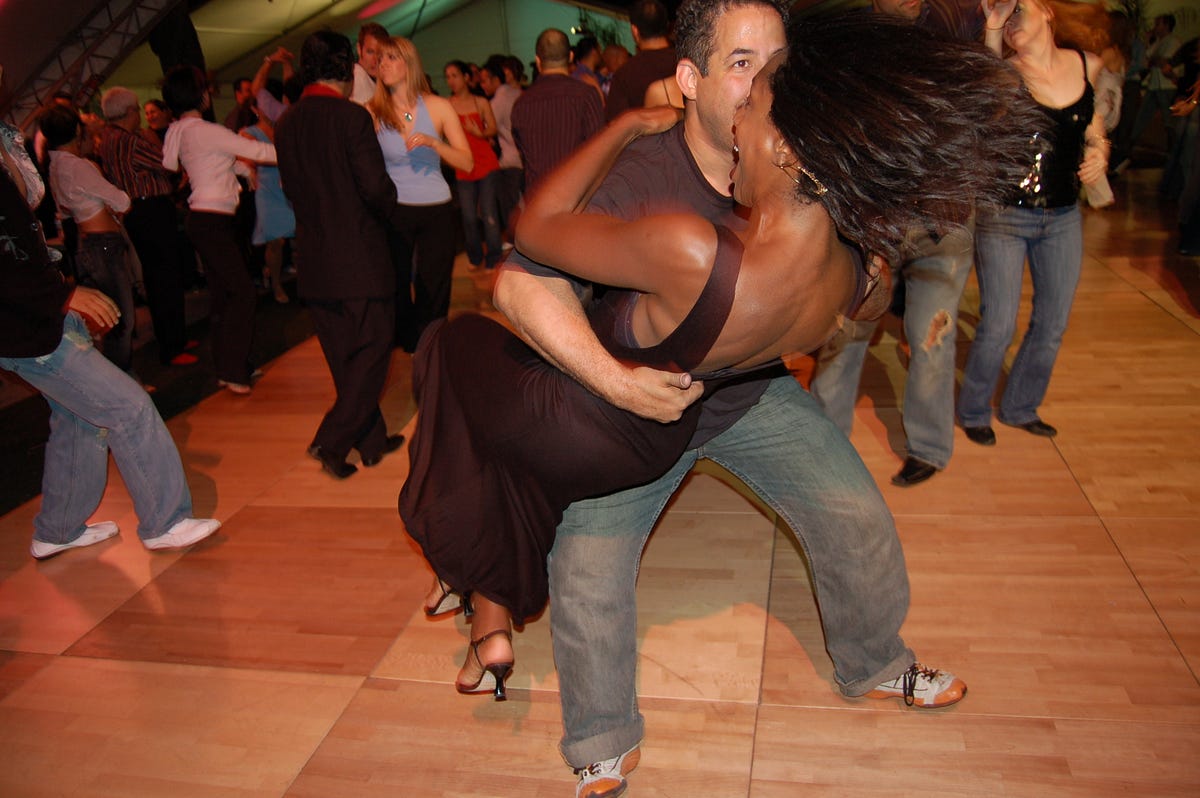Unknown Facts About Dance Fridays
Wiki Article
Getting The Dance Fridays To Work
Table of ContentsLittle Known Facts About Dance Fridays.The smart Trick of Dance Fridays That Nobody is DiscussingLittle Known Facts About Dance Fridays.Getting The Dance Fridays To Work
Let's think of Salsa dance and songs as a huge Tree that resembles this: Salsa is danced world-wide while several technical facets of the dance coincide across designs (6 actions over 8 beats danced on a quick-quick-slow or slow-quick-quick rhythm), there are several "characteristic" features of the primary designs of Salsa that distinguish one from the other.Pairs participating in a Gambling enterprise Rueda dance all actions in unison as called by a Leader. Distinguishing features of Cuban style salsa are round turn patterns (with "break back" steps on matters 1 and 5) in addition to body language inspired by traditional Afro-Cuban folkloric dancings. Distinct functions of Cali style salsa fasts and detailed maneuvering, danced with a strong hand hold link in between partners.
The origins of the style are a subject of debate, however it is said that New York design Salsa dance originated in the 1960's as a result of the influx of Latin American emigrants after the Cuban Transformation. Eddie Torres is one of the most well recognized New York design professional dancer, being almost widely attributed with promoting the design to dance centres beyond New york city.
The basic rhythm of "On-2" is slow-quick-quick. The "youngest" of the styles of Salsa, L.A. Style (some individuals have actually called it "West Coast" style) became popular in the 1990's and has its beginnings in ballroom (Mambo, Swing and Cha, Cha, Cha). Transform patterns lead and adhere to strategies are heavily influenced by these styles, with the Cross Body Lead being the foundation of the style.
All about Dance Fridays
Style are execution of turn patterns and figures in the "port", with the break steps on matters "1" and "5". While Salsa music has strong beginnings in Cuban, Colombian and Puerto-Rican folkoric customs, it can not be discounted that all Afro-Latin and Latin American societies have added to contemporary Salsa songs as we recognize it today.It's feasible that due to political reasons the contribution of Afro-Cuban society and heritage to modern Salsa in the 1960's and 70's is not widely acknowledged, however it can not be ignored the significant payment and influence of the "Queen of Salsa", Celia Cruz (salsa club san francisco). Thanks to the web and ease of accessibility to details, the appeal of Salsa songs, dancing and culture has spread like wildfire over the last 30 years and even after that contemporary Salsa musicians continue to pay homage to the Founding Dads and Mother of Salsa.
Today Salsa songs is developed, performed and popular global. In 2000 the influence of Latin American music and society (not just Salsa) was acknowledged by the National Academy of Recording Arts and Sciences in the United State and the Latin Grammy Awards were developed. The Latin Grammy's have brought attention to the Salsa Legends and contemporary Salsa artists alike
Facts About Dance Fridays Revealed
distinguishing attributes of Salsa music are: 4/4 measure signature, Son Clave and Tumbao rhythms, Montuno Piano Unless you have a background in songs, the above 3 characteristics probably indicate absolutely nothing to you. A less complicated way to explain Salsa songs is how it does NOT seem like various other kinds of Latin American music.Bachata is a straight 4 beat dance with an occurrence of a syncopated guitara line and a clear absence of any "tough" piano, brass (trumpet, trombone) lines. Cha, Cha, Cha resembles Salsa songs the most as it seems like "actually slow" salsa/mambo. salsa club san francisco. Cha, Cha, Cha can be distinguished by it's focus of the double tumbao beat on counts 4 +5 and 8 +1 (the "cha-cha-cha") You've been to a Salsa night at a club and you're connected you enjoy the songs, the power, the appearance of 2 professional dancers gliding across the dance flooring executing cool spins and turn patterns
It's time for lessons. With so lots of workshops out there and different styles to select from, where does a complete newbie begin? Most all new professional dancers choose to learn L.A. "On-1" style slotted Salsa designs are the most common in The United States and Canada (with some exemptions of some metropolitan centres that still predominantly accept Cuban and Puerto Rican styles) and L (https://myanimelist.net/profile/salsacrazysf1).A
.A. Design will rapidly educate you the principles of Salsa timing, weight transfer and turn pattern execution. Several dancers, when they have actually had a year or 2 of dancing L.A. Style Salsa under their belts, "button" to New york city design in order to expand their dance vocabulary; however lots of professional dancers choose to adhere to simply one design of Salsa and appreciate their time on the dancing floor because certain design (salsa club san francisco).
Style and New York Design all being danced in the exact same club, with many of click to find out more the professional dancers having the ability to change from one style to the various other from one tune to the next. Despite which style you pick it is necessary to stay with that design until you're very comfortable with the basics of timing, body rhythm and structure step implementation before considering "changing" styles (if you intend to).

Report this wiki page